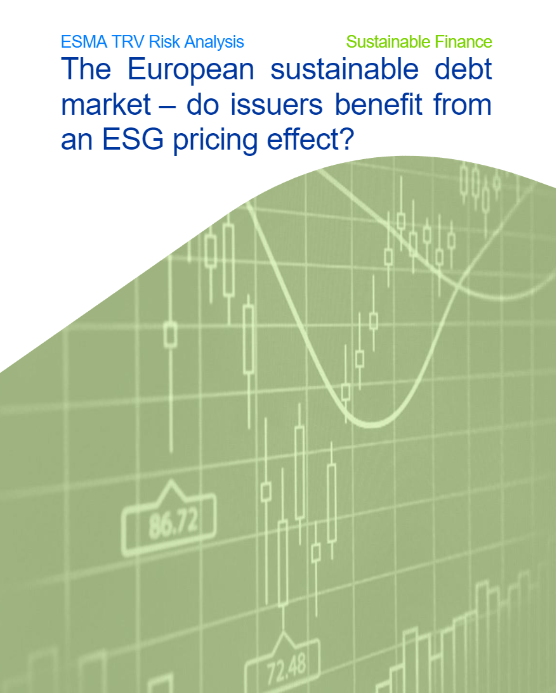
Resumen:La emisión de deuda con etiqueta sostenible se ha disparado en los últimos años, beneficiándose del creciente apetito de los inversores por productos financieros que contengan un elemento de sostenibilidad. Al mismo tiempo, las investigaciones sugieren que los emisores de deuda con etiqueta sostenible pueden beneficiarse de una ventaja en la fijación de precios, el denominado "greenium", que suele atribuirse a la disposición de los inversores a renunciar a rendimientos a cambio del elemento de sostenibilidad del producto financiero en el que invierten. Sin embargo, las pruebas existentes hasta ahora no han sido concluyentes en cuanto a la existencia de una ventaja de precios definida, y además se centran principalmente sólo en los bonos verdes. Este artículo amplía el trabajo analítico a todos los tipos de bonos medioambientales, sociales y de gobernanza (ESG) e identifica un conjunto de factores clave que pueden causar el greenium. De este modo, el tema es relevante para varios de los mandatos de la AEVM. Aumenta directamente la comprensión de las preferencias de los inversores por las finanzas sostenibles, ayuda a investigar cualquier distorsión de precios entre instrumentos de deuda comparables que pudiera afectar a la estabilidad del mercado si se deshicieran y, por último, contribuye a la prioridad estratégica de la AEVM de supervisar la evolución del mercado ASG y evaluar nuevos instrumentos financieros. En cuanto a las conclusiones, nuestros resultados analíticos no pueden confirmar la existencia de una ventaja sistemática y coherente en la fijación de precios para ninguna categoría de bonos ASG.
Summary:Issuance of sustainable-labelled debt has soared over the last years, benefitting from an increasing investor appetite for financial products that contain a sustainability element. At the same time, research suggests that sustainable-labelled debt issuers may benefit from a pricing advantage, the so-called ‘greenium’, which is often attributed to investor’s willingness to forego returns in exchange for the sustainability element of the financial product they are investing in. However, existing evidence has not been conclusive so far regarding the existence of a definite pricing advantage, and it further focuses mainly on green bonds only. This article expands the analytical work to all environmental, social and governance (ESG) bond types and identifies a set of key factors potentially causing the greenium. The topic is thereby relevant to several of ESMA’s mandates. It directly adds to the understanding of investor preferences for sustainable finance, it helps to investigate any pricing distortions between comparable debt instruments that might impact market stability if they unravel, and, finally, it contributes to ESMA’s strategic priority of monitoring ESG market developments and assessing new financial instruments. In terms of findings, our analytical results cannot confirm the existence of a systematic and consistent pricing advantage for any ESG bond category. Furthermore, we find that in the past, issuers of ESG bonds benefitted from pricing premiums based on their issuer characteristics and that issuers’ public sustainability commitments do not impact the pricing of their bonds.The European sustainable debt market – do issuers benefit from an ESG pricing effect?
Fecha publicación: 2023
Autor: Autoridad Europea de Valores y Mercados (Órgano o agencia de la UE)
ISBN / ISSN: 978-92-95202-99-3 /-
Link: https://n9.cl/bp2pa
Palabras clave: Autoridad Europea de Valores y Mercados , créditos por cobrar , desarrollo sostenible , economía verde , estabilidad financiera , fijación de precios , financiación sostenible , gestión de riesgos , gobernanza multinivel , instrumento financiero de la UE , riesgo financiero , valor de renta fija
Keywords: European Securities and Markets Authority , receivables , sustainable development , green economy , financial stability , pricing , sustainable financing , risk management , multilevel governance , EU financial instrument , financial risk , fixed income value , financial stability , multilevel governance , sustainable development , fixed income value
